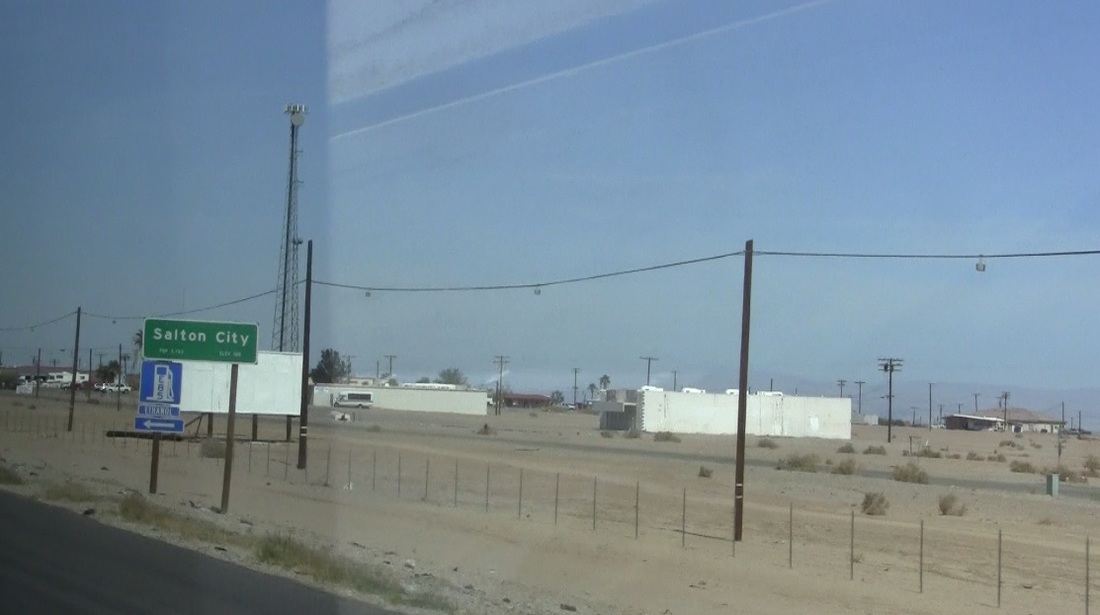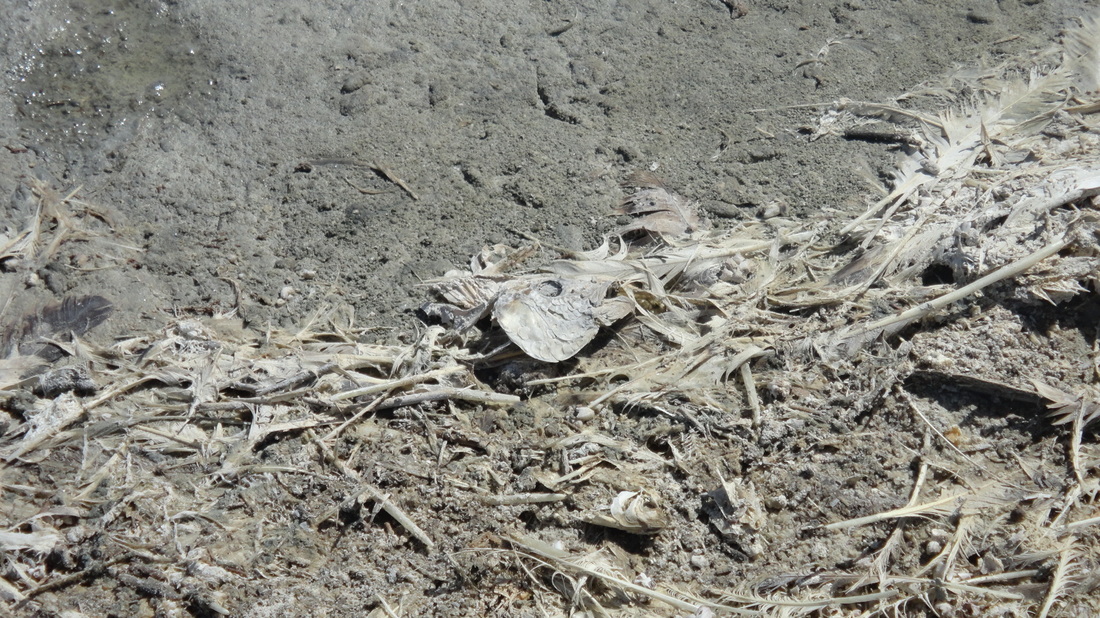|
The Salton Sea lies right over the San Andreas Fault line. That is the fault line that separated the Pacific and North American plates. Thirty Million years ago, the Pacific and North American tectonic plates met. This didn’t stop the land from grinding with each other, and as Pacific plate continued to shift upwards, it ripped a rift valley, separating Baja California from the Mexican mainland. This rift then filled with ocean water, creating the Gulf of California. That gulf used to extend through the Salton sink, all the way up to Palm Springs. East of the Salton sink, the Colorado River emptied into the vast California gulf. With the river water, sediment would be carried down, filling the land south of the Salton sink and creating two river deltas that would switch back and forth randomly. This cut the gulf of California into a smaller gulf and a large called Lake Cahuilla, which would periodically fill and dry from time to time, leaving deposits of salt on the sand. The lake last dried up between the years 1500 CE and 1600 CE, and the remaining dried lake bed was subsequently found by Spanish Conquistadors and named the "La Palma de la Mano de Dios," or the "Hollow of God's Hand". In 1848, Gold was discovered in San Francisco and by 1850, the California gold rush began and soon the population soured to 300,000. California also became a state that year. By 1855, the gold rush was over – or so they thought. In 1869, dead smack in-between the old town of San Diego and the Salton Sink, gold was discovered in Julian and there was another rush. On the way over to Julian, miners would pass the sink, and it wasn't long before people began settling there to mine salt. Farms soon appeared and towns began to pop up, including the town of Salton. To help bring more water to the area, officials built the Imperial Canal, which brought water from the Colorado River to the Imperial Valley in order to grow crops, blocking the delta that would fill the sink. In 1905, Silt began to block the Imperial canal, so the river was temporarily diverted to fix it, filling the Salton Sink with water. The canal took two years to fix before the water was diverted back. When it was, a large artificial fresh water lake the size of Lake Tahoe was left, and the town of Salton had been completely submerged underwater, and things stayed that way for a while. During this time, in 1907, Imperial County was cut out of San Diego County. People originally thought that the sea would eventually dry up, but when it didn’t, they began to find other opportunities there. In 1942, during WWII, the military opened a Naval and a Marine base there. On the Naval base, west of the sea, they would fly secret missions from a base in Nevada over the Salton Sea; dropping dummy atomic bombs into the water (I want to go and retrieve a free dummy atomic bomb). The Marine base on the east side was called Camp Dunlap. By the early 1950s California Department of Fish and Game began stocking the sea with fish from the Gulf of California and a number of towns began to pop up. The population grew, and the Salton Sea soon became a beach resort community. Not needing anymore use for the land, the Marine base was dismantled in 1956, leaving only the stone slabs used as a foundation. Right next to the Naval Base, Salton City was mapped out and established in 1958. The Government gave the land back to the State of California in 1961, and development began. A Marina was soon built. Roads were paved and named, lots set aside for sale, waiting for people to buy and build their dream homes on. Sewage, water, and power lines were installed. There was even a large plot of land void of any streets next to the beach. Could it have been what remains of the planned 18-hole golf course, perhaps? On the other side of the sea, Bombay Beach and a Yacht club emerged. Back at the abandoned Marine base, chemical plant workers who were hired to harvest creosote leaves, moved into the abandoned area, living in trailers and buses and giving birth to Slab City. By 1965, more people migrated to the area. What the residents and developers didn't realize at the time was that the chemicals fertilizers used in the farm lands surrounding the area was running off into the sea. The salinity content in the water jumped. This caused an enormous amount of algae to form, which consumed the oxygen in the lake while expelling hydrogen sulfide gas. This gas is dangerous and it turned the water poisonous, killing millions of fish. The dead fish would float to the surface, or be washed ashore where birds would eat them, and also die. The water became stale and salty; the fish and bird corpses left the resorts smelling terrible. When their flesh rotted, their bones began to break up and disintegrate. This happened continuously for years until the beach was bleached white with bones and calcium dust almost completely covering the sand and stone. By the end of the sixties, people began to abandon the towns around the sea. Maintenance stopped, and the elements began to reclaim the land. Entire neighborhoods of paved communities were never built. In the mid-70s, with the sea level rising, the small naval base there was finally abandoned, and in the 80s turned into a firing range, with all of the old buildings being destroyed by live test fire. Also in the early 1980s a homeless veteran name Leonard Knight came to the area and began building a makeshift religious monument near Slab city out of straw, cement, and paint. After spending a decade building it, his monument dubbed Salvation Mountain, was completed. Authorities weren’t too happy about it at first and wanted to tear it down, because it was a religious memorial on state property, and nobody was paying them for the land. However, by then Knight had gained many friends and helpers over the years there who signed petitions to save it from destruction. In 2014, I visited the area with my friends. It was an interesting trip to areas I had never seen before. Though the run down neighborhoods and dead fish skeleton beaches were a bit of a bummer, Salvation Mountain, and watching the sunset from Bombay Beach were unforgettable experiences. Unfortunately, Knight passed away a few days before I arrived at Salvation Mountain, so I wasn’t able to meet him. Instead, I met a rude photographer who was yelling at a couple of females for hiking Salvation Mountain outside of its yellow paint trail. When I asked for information on Knight's funeral services, he rudely pointed me to an empty booth and went about his business. Asshole. Still, it didn’t ruin my day and someday, it will make a great video special.
0 Comments
Leave a Reply. |
Archives
March 2024
|












 RSS Feed
RSS Feed